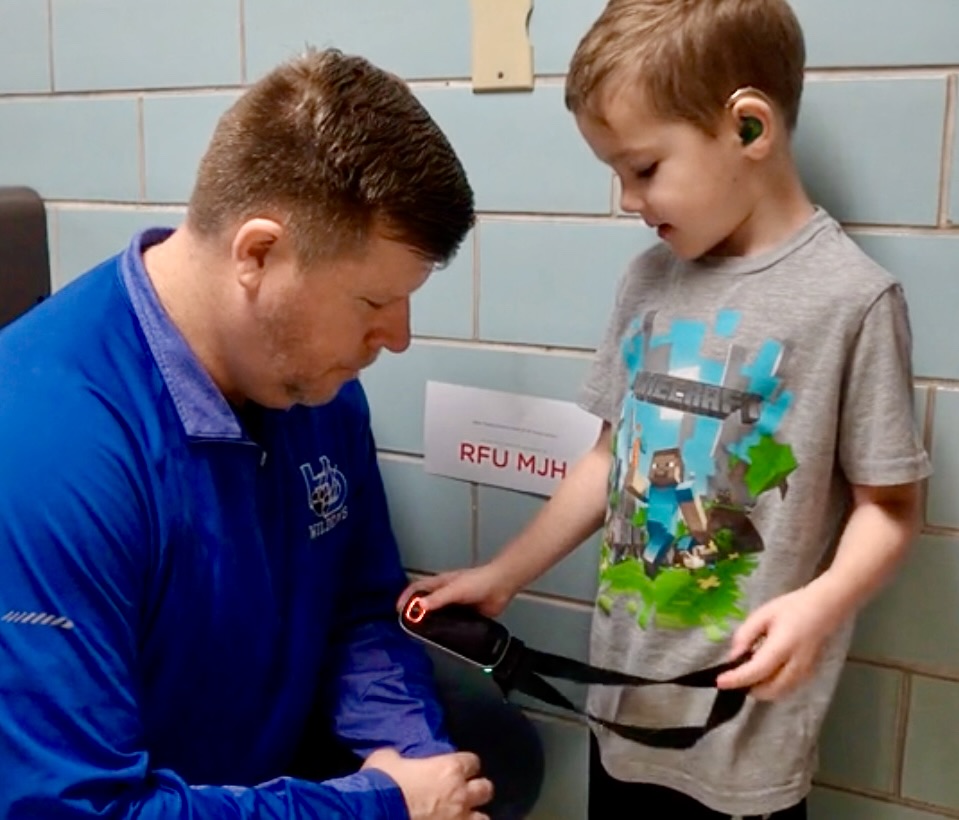Your Child’s Journey: An Ohio Guide for Deaf or Hard of Hearing Support
Hearing Assistive Technology in an Educational Setting
If your child is listening to spoken language at school, an educational audiologist can be a valuable member of your child’s IEP team.
An educational audiologist is different from one you might see at a hospital or hearing center. Educational audiologists have additional training specializing in how hearing impacts learning in a school setting.
Educational audiologists can help by:
- Explaining the results of an audiogram to the IEP team.
- Performing assessments, such as a Functional Listening Evaluation (FLE), which identifies how well your child hears in the classroom, and what makes it harder for them to understand speech.
- Provide recommendations for improving your child’s listening access, which may include adaptations to the room, or hearing assistive technology (HAT).
- Teach you, your child, and others how to use HAT.
- Troubleshoot HAT issues or broken equipment.
Example of a Classroom Hearing Scenario
An educational audiologist conducts a FLE for a student in a classroom scenario, which identified the following hearing barriers:
- Background noise (like a noisy radiator) makes it hard to hear speech.
- Poor room acoustics (hard floors, high ceilings) caused echoes that interfere with speech understanding.
- Multiple conversations were happening at once which made it difficult to focus on one speaker.
- Distance from the teacher made speech harder to understand.
Based on these findings, they might suggest:
- Turning off or covering noisy radiators.
- Adding rugs, carpets, or bulletin boards to absorb sound.
- Using a hearing assistive technology device, such as a digital modulation (DM) system to reduce background noise and improve hearing from a distance.
- Priority seating close to the teacher or speaker.
Although other professionals, such as a speech language pathologist, or a teacher of the deaf may be familiar with HAT, an educational audiologist is uniquely qualified to select hearing assistive technology in a school setting. However, please note, this does not include hearing aids or implants. Those types of hearing assistive technology require medical clearance to address.
Types of Hearing Assistive Technology (HAT)
Here are some common devices used in educational settings:
Digital Modulation system (DM)

In the past, this device was called an FM (frequency modulation) system. However, with the advancement of technology, these devices have evolved to use digital modulation (DM) instead of frequency. This provides a better quality of sound. DM systems include
- A microphone worn by the teacher.
- A receiver that connects to the child’s hearing aid, cochlear implant, or headphones.
The teacher’s voice is sent directly to the receiver, which reduces background noise. DM systems can bridge distances, helping students hear even when the teacher moves around a noisy classroom, or a wide-open space. There are different types, including desktop microphones that sit on a table instead of being worn.
Your educational audiologist can check out HAT for a trial period for free through OCALI’s Lending Library.
Infrared Systems
Infrared systems use light waves to send sound across a room. The sound is converted into light, sent to a receiver, and then turned back into sound. These systems are often used:
- At home for TV listening.
- In theaters or large meeting spaces.
One-to-One Communicators
These are great when a child needs to hear just one person in noisy settings like:
- Hospital rooms.
- School cafeterias.
The speaker talks into a microphone, and the sound is sent directly to the child’s hearing aid or headset.
Classroom Audio Distribution Systems (Sound Fields)
These systems use multiple speakers placed around the room. The teacher wears a wireless microphone, which sends their voice to the speakers. This helps all students hear, no matter where they sit. Sound field systems are useful for all students because they make the teacher’s voice clearer.
Tools to Identify Needs for Assistive Technology
 Assessment Webinar Series for Deafness and Blindness.
Assessment Webinar Series for Deafness and Blindness.- Communication Planning Guide
- Guidelines for the Assessment and Educational Evaluation of Students Who are Deaf or Hard of Hearing
- Student Inventory for Technology Supports
Final Thoughts
Your child might have unique language, communication, and access needs, which may be addressed through multiple assistive technology solutions, and with a variety of professionals. For example, a teacher of the deaf may suggest speech to text technology, a speech language pathologist could recommend augmentative alternative communication devices, and an audiologist could identify a deaf friendly fire alarm system. This is why you may want to use a team approach. Different professionals will be able to perform specialized assessments to identify your child’s specific needs and provide different types of support and recommendations, which may or may not include technological solutions.